Madeira: Island Vineyard
By Noel Cossart with new material by Emanuel Berk
Madeira (the wine) and the United States share a bond that is unique in the world. Both practically owe their existence to each other, and they come from similar backgrounds. They both started in exile, needing to leave their European homelands and travel across the ocean to a far away place in order to come into their own and rise to their highest potential. It is not by accident that Madeira wines were the most favored in the American colonies and the Founding Fathers of the U.S. They were like brothers, and hand-in-hand they achieved greatness together.
Mr. Berk knows this, and knows the struggle that Madeira, both the wine and the island, has endured to try to re-attain the heights in popularity seen in the 1830s and 1840s. It is he who has embraced this Madeira tradition in America and has led the way in the re-emergence of the great wines of Madeira through his company The Rare Wine Company. So it is fitting that he be the one to reissue arguably the greatest book about Madeira, Madeira, The Island Vineyard by Noël Cossart. But not just a reissue, as Mr. Berk has applied a skillful hand in improving the original with new facts not known at the time of the original issue. He’s done so in a way that augments the original while letting Cossart’s work shine on its own.
In some ways, Mr. Berk and Mr. Cossart are alike. The chapter about Noel shows a man that dedicated his life to resurrecting the great Cossart, Gordon company and keep it independent in the face of many adversities. This is not unlike Mr. Berk’s work to resurrect Madeira wines in the U.S.
This book really reads like two books in one, with Mr. Cossart’s original text and Mr. Berk’s new work. Let’s look at the original text first, and then the new data.
Mr. Cossart starts off with a history of the island and the beginnings of agriculture on Madeira. He then plunges into a study of the beginning of the wine trade dating back to the 15th century. We then get a thorough review of the wine merchants that built the industry on the island. Many of these families are still in the wine business there, such as Blandy and Leacock, and of course Cossart. This consumes the beginning third of the book and provides an excellent foundation for the rest of the story.
Mr. Cossart gives us a brief history of the Madeiras that were sold to India, a major market for hundreds of years. He then goes on to tell us what the old Madeiras coming back from India had a much higher auction value in the early 19th century than identical wines coming from England. It was widely known by this time that heat and agitation greatly improved the characteristics of Madeira. Wines that had been to “the Indies” would have seen much more of this than other wines, so they could be expected to be much more complex, and valuable.
There is a significant chapter full of history of Madeira in North America. Mr. Cossart gives credit to Americans for having some of the best understanding of handling and enjoying Madeira in the world. He describes the major ports of America that became primary cities in the Madeira trade and ultimately the collection of Madeira. The 18th and early 19th century trade was concentrated around Boston, Charleston (referred to as Charlestown by Cossart), Baltimore and Savannah. So it was natural that the great collections of Madeiras would occur around these cities and that the best stories would originate there.
Perhaps one of the best examples of the “Society” around Madeira wines would be The Madeira Club of Savannah. Founded in 1950, this fellowship (males only, please – sorry ladies) share camaraderie around fine food, fine Madeira and literary expertise brought together in a monthly celebration of life’s pleasures. We learn that the club benefits from the cellars of its members, holding some of the finest collections of Madeira in the world. The club’s activities consist of a meeting at a member’s home, where a fine dinner is served. Both before and after dinner a fine Madeira is served, such as a Cama de Lobos Solera 1792 and a Terrantez 1870. The dinner is followed by the reading of a paper written by one of the members on any subject the writer feels would be of interest. It is easy to sit back and vicariously enjoy the evening described.
We are also provided with quite a bit of information about some of the famous ship names that were involved in the Madeira trade. Throughout the early years all the way to the end of the 19th century, Madeira was labeled and marketed not by the grape variety but usually by the name of the ship the barrel had been transported upon, the name of the importer, or the places the wine had travelled to. So it was common to find a wine marked “Jenny Lind 1849” (from the Gibson House Hotel wine list in 1856), “The Rebel 1840”, or “Finest Old, full lavoured Cama de Lobos East India ex Star of Bengal, Calcutta, November 1877”. Americans relied upon their keen taste and knowledge of Madeira to know what was in the bottle.
I found the two chapters about the vines and vineyards of Madeira to be very informative without being dry, technical stuff. Mr. Cossart explains the different vineyards on the island along with the type and quality of the grapes grown in each. He then takes this discussion fairly seamlessly into the very important topics of the two 19th century plagues that struck the vines, the Oidium fungus of 1852 and the Phylloxera in 1883. This information is expanded by a description of the personalities involved in the detection of the problems and those that were involved in their eradication and control. This last part was much more informative than the description one normally sees in wine books because of the “who did what” style in which it’s presented.
The wine making chapter is interesting in that the process of making Madeira is so different from the creation of any other wine in the world. Here Mr. Cossart mixes the technical with the romantic (but accurate) telling of how ocean voyages improved the wines and their quality. It is great to learn of the various ships that were used in the process, and how drinkers would compare similar wines that had traveled on different ships to determine the nuances in each. The explanation of the estufagem process that makes Madeira the unique wine that it is is an asset to this section.
The last quarter of Mr. Cossart’s work is dedicated to his experiences with great Madeiras, both vintage and solera. He gives us the benefit of his knowledge and the knowledge of his ancestors and friends to become familiar with some of the most famous and special Madeiras ever made. For a lover of history, these chapters just draw me in. The stories around the 1792 Napoleon, the Bianchi family wines, or special vintages of Terrantez are examples of information that only someone who lived a life in Madeira can share.
Are the historical accounts colored? Perhaps, but I think that still makes them valuable. Mr. Cossart is speaking not from an analytical historian’s point of view but from a perspective of a person who has lived the history. While some points may be shaded or questionable, what he brings to the table is the stuff that creates the humanity of the people of Madeira and those who make up its wine trade.
If Mr. Cossart’s book was all that you got in this edition, that would be reason enough to add this work to your collection. But wait, there’s more! Mr. Berk has wrapped Cossart’s original book with prefaces and appendices that take Cossart’s material to an even higher level.
Mr. Berk starts with an important introduction to the edition to tell us what direction this second edition will take. He then follows this with a short, summarized history of Madeira and its wine industry. Lastly, he adds a thorough biography of Noel Cossart. Titled A Life in Wine, we’re introduced to the author and his ancestors in a way that tells us that Noel Cossart is not just an expert on Madeira – he is Madeira. He has the history of Madeira running through his veins and in his DNA.
On the back end, Mr. Berk has added a number of appendices. Each of these expand on topics addressed by Mr. Cossart’s original text. We have new information about individuals that Mr. Cossart knew and interacted with about Madeira, such as Roy Brady and John Delaforce. We also get new research on Madeira traditions such as the story around the 1792 Napoleon Madeira and the legendary Madeiras by William Neyle Habersham of Savannah.
I love the way Mr. Berk has handled the introduction of this material that was researched after the first edition of Madeira, The Island Vineyard. He has left the original Cossart text intact and then added the new, post-1984 material in the appendices for us to absorb separately. This is very respectful of Mr. Cossart’s original work. Bravo to Mr. Berk.
The second edition of Noel Cossart’s Madeira, The Island Vineyard belongs in the library of every person even remotely interested in Madeira wines. Those who are lucky enough to own a copy of the first edition should still get this one for the valuable additions by Mr. Berk. This is a significant study on the subject that should not be missed.
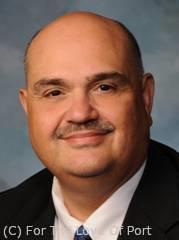 The author of this review, John Danza, lives in the Chicago area. He has granted permission to FTLOP to reproduce this review which was originally published in The Wayward Tendrils Quarterly. The Wayward Tendrils is a wine book collector’s society. More information can be found at: www.waywardtendrils.com. John has been drinking and collecting wine for over 20 years, with his favorites being Bordeaux (both red and sweet white), Port, and Madeira. He started to collect wine books after a book given to him by his sister-in-law led him to George Saintsbury and ultimately Andre Simon, whose books John now specializes in. John is a member of the Chicago branch of the International Wine & Food Society, and is also a member of the Board of Governors of the Americas for that organization. Professionally, he works for a large health insurance software vendor.
The author of this review, John Danza, lives in the Chicago area. He has granted permission to FTLOP to reproduce this review which was originally published in The Wayward Tendrils Quarterly. The Wayward Tendrils is a wine book collector’s society. More information can be found at: www.waywardtendrils.com. John has been drinking and collecting wine for over 20 years, with his favorites being Bordeaux (both red and sweet white), Port, and Madeira. He started to collect wine books after a book given to him by his sister-in-law led him to George Saintsbury and ultimately Andre Simon, whose books John now specializes in. John is a member of the Chicago branch of the International Wine & Food Society, and is also a member of the Board of Governors of the Americas for that organization. Professionally, he works for a large health insurance software vendor.
A review by John Danza © October 2011

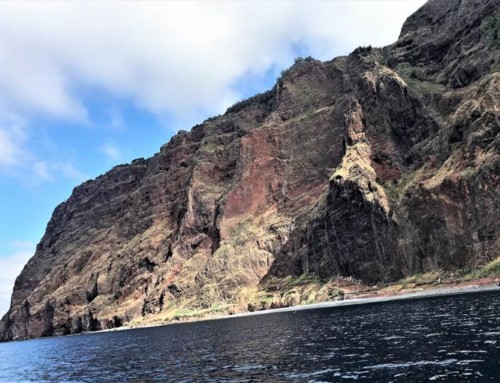
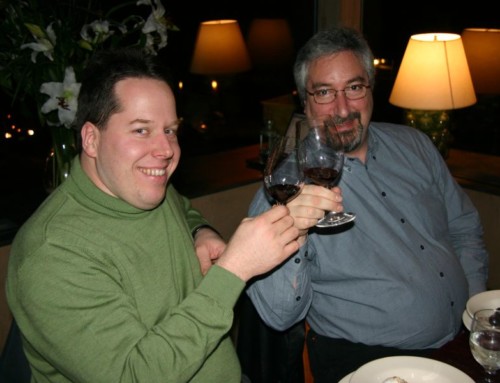
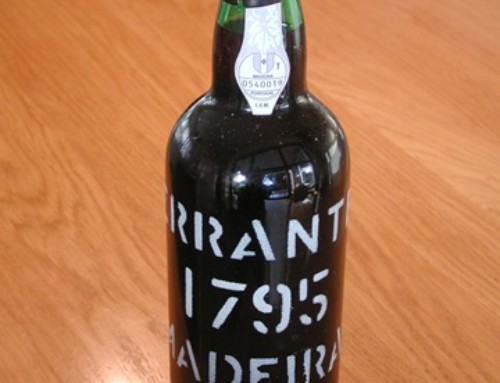
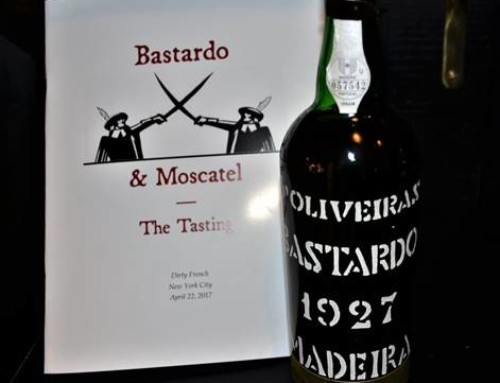
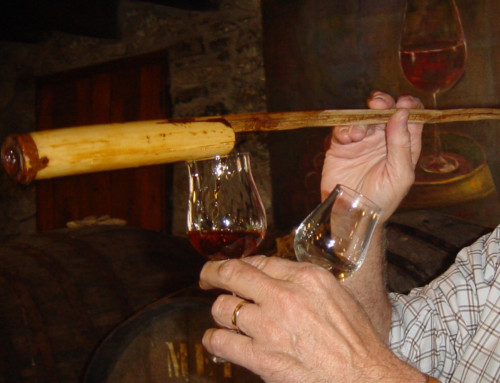
Leave A Comment
You must be logged in to post a comment.